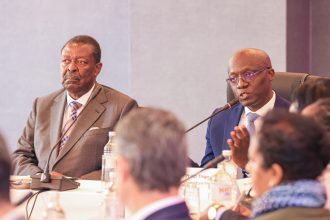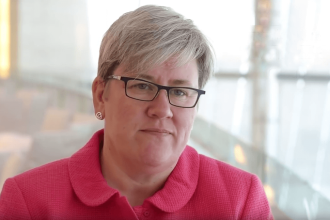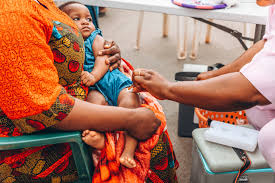By Lenah Bosibori
As food insecurity tightens its grip across Africa’s arid and semi-arid regions, a bold new blueprint for agricultural transformation has taken root. On April 9, the International Crops Research Institute for the Semi-Arid Tropics (ICRISAT) launched the Africa Strategic Roadmap for Dryland Agriculture.
The ambitious and science-led strategy is designed to boost climate resilience, improve livelihoods, and empower local innovation in one of the world’s most climate-vulnerable regions.
launched at CGIAR Science Week in Nairobi, Dr. Lindiwe Majele-Sibanda, Chair of the ICRISAT Governing Board said that although ICRISAT is headquartered in India, it was deliberately established to address challenges in dryland areas. And Africa is truly the place for ICRISAT.
“This is a strategy for Africa, launched on African soil, by Africans,” said Sibanda. “It is not only rooted in science and evidence but also in strong partnerships, gender inclusion, and the lived realities of smallholder farmers.”
She further added that Africa has a mobile phone penetration rate of over 80%, and there’s no better way to reach farmers or involve youth in agriculture and sustainable food systems than through digital tools.
Titled ‘Microbial Solutions for Advancing Nature-Positive and Regenerative Agriculture in Drylands’ the roadmap targets the drylands of sub-Saharan Africa, which account for 43% of the continent’s landmass and are home to millions of smallholder farmers, many of whom are women and youth.
“These regions face an array of challenges prolonged droughts, erratic rainfall, degraded soils, and rising food insecurity yet they also hold untapped potential for sustainable development,” she added.
Seven Pillars of Transformation
ICRISAT’s strategy is anchored on seven key pillars:
- Climate-Resilient Crops: Developing and scaling drought-tolerant, early-maturing, and nutrient-rich varieties of sorghum, millet, pigeon pea, groundnut, and chickpea.
- Digital Agriculture: Leveraging Africa’s 80% mobile penetration rate to deliver real-time advisories, early warning systems, and market information.
- Inclusive Partnerships: Building strong coalitions across governments, research institutions, private sector, and farming communities.
- Youth and Women Empowerment: Enhancing access to resources, decision-making spaces, and entrepreneurship opportunities.
- Capacity Development: Training national agricultural research systems, extension workers, and community champions.
- Resilient Seed Systems: Strengthening seed delivery and availability through local networks and gene banks.
- Policy and Advocacy: Engaging policymakers to create enabling environments for dryland agriculture.
Dr Himanshu Pathak Pathak, Director General ICRISAT Research, emphasized the power of science in building agricultural resilience.
“India and Africa share similar agro-ecologies. The technologies that lifted millions out of poverty in India can also work here but they must be adapted and driven by local ownership.”
One such adaptation is the ICRISAT-led Smart Food initiative, which promotes the use of neglected but climate-resilient crops like sorghum and millets as alternatives to water-intensive staples.
“Drylands are not only thirsty they are hungry. They need more water, more nutrients, and more organic carbon. That’s why we, along with our partners across African countries and CGIAR, are committed to offering science-based solutions,” added Pathak.
In Kenya’s Makueni County, farmers like Esther Nzilani are already seeing benefits. “Since I started planting improved pigeon pea and millet varieties, my harvests have doubled. We can feed our families and sell the surplus,” she says.
The roadmap aligns with broader continental and global development goals, including the African Union’s Agenda 2063, the Malabo Declaration, and the UN Sustainable Development Goals (SDGs). “It’s not just about farming,” said Prof. Stanford Blade, ICRISAT Board Member. “It’s about jobs, nutrition, dignity, and climate justice.”
As the strategy takes root across Africa’s drylands, its architects remain clear-eyed about the work ahead. “This is not a one-size-fits-all solution,” said Dr. Stanford Blade Deputy Director General for Research & Innovation, ICRISAT
“But it is a unifying vision. And if we walk this journey together, from scientists to farmers, from policymakers to youth, we can build a future where drylands thrive.”




